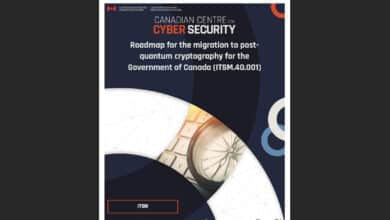The U.S. GAO Publishes a Quantum Threat Report – Right on Strategy but Wrong on Timing

The U.S. Government Accountability Office (GAO) has issued a June 2025 report titled “Quantum Computing: Leadership Needed to Coordinate Cyber Threat Mitigation Strategy” (GAO-25-108590). GAO makes many spot-on recommendations – calling for strong federal leadership, workforce development, investment in post-quantum readiness, and securing the quantum tech supply chain – and I wholeheartedly agree with these points. However, I strongly disagree with GAO’s suggested timeline that a cryptography-breaking quantum computer is still 10–20 years away. In my view, the quantum threat is racing toward us faster than official estimates imply, and we must respond with the urgency of a present crisis.
GAO’s Call to Action: Leadership, Workforce, Investment, and Supply Chain
GAO’s report underscores four critical areas for U.S. preparedness in a post-quantum world. In an earlier study, GAO had identified policy options for policymakers across government and industry to accelerate quantum development and mitigate risks. These focus areas bear repeating, and I agree with all of them.
- Federal Leadership & Strategy: No one was in charge of a unified quantum cybersecurity strategy until recently, and GAO argues that strong central leadership is needed going forward. The Office of the National Cyber Director (ONCD) is highlighted as the logical lead to coordinate a national response. (More on this below.)
- Workforce Development: There is a pressing need to expand the quantum-capable workforce – through education programs, job training, and talent recruitment. Without enough skilled professionals in quantum science and cybersecurity, even the best strategies will falter.
- Investment in Post-Quantum Readiness: Continuous and targeted investment is required to advance quantum technologies and to transition our encryption infrastructure to quantum-resistant standards. This includes funding R&D, supporting pilot projects, and ensuring organizations have the resources to migrate to post-quantum cryptography.
- Secure Quantum Supply Chain: We must strengthen the supply chain for quantum technologies, ensuring it’s robust and secure. From quantum hardware components to post-quantum cryptographic software, any weak link or foreign dependency could undermine national security in the quantum era.
The Quantum Threat Timeline: 10–20 Years? Try Closer to Now
Now for the part of GAO’s report that didn’t sit well with me: the estimated timeline of the threat. GAO cites experts who predict that a cryptographically relevant quantum computer (CRQC) – essentially, a quantum computer capable of breaking current encryption – “may be developed in the next 10 to 20 years”. In other words, the worst-case scenario (from a cryptography perspective) is placed somewhere around 2035 to 2045.
We simply cannot assume we have that much time. This matches what used to be the expert consensus up until about a year ago. The consensus is now bringing the deadline forward. Personally, I am bullish about the field and I recently revised my prediction to 2030 (from 2032). See “Q-Day Revisited – RSA-2048 Broken by 2030: Detailed Analysis.”
More importantly, even if the first CRQC doesn’t arrive until, say, 2035, the threat is effectively already here. GAO’s report itself acknowledges this with a critical caveat: “adversaries could copy data protected by cryptography today and store it with the intention of accessing it later once a CRQC is developed.” This tactic is often phrased as “harvest now, decrypt later.” In practice, it means that any sensitive data being intercepted or stolen right now could be stockpiled and decrypted in the future when quantum code-breaking becomes feasible. So even if the quantum decryption machine comes in 15 years, the data you are encrypting today might only have 15 years of security at best. For some information (nuclear plans, identities of assets, etc.), 15 years is a blink of an eye. For other data (say, your genomic or medical data), you might expect confidentiality for a lifetime, but a quantum computer could expose it much sooner.
Given this reality, I argue that we must manage the quantum threat with the urgency of a present crisis. Treat that 10–20 year prediction as the ceiling, not the floor. The prudent approach for cybersecurity professionals is to assume the worst-case timeline – and act accordingly.



